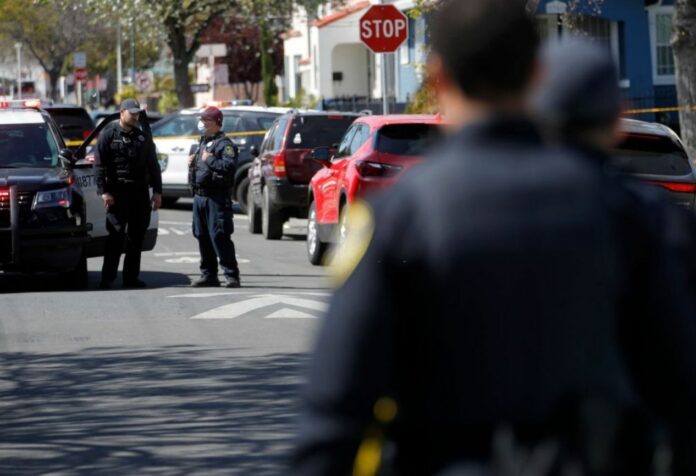A long-term study published today on the lives of Americans has revealed alarming rates of gun violence exposure in the US.
According to a recent study that followed the lives of Chicago residents from childhood and adolescence in the 1990s until middle age, it was discovered that by the time they turned forty, 56% of Black and Hispanic residents throughout the city had witnessed at least one shooting. This finding highlights the pervasive nature of gun violence in the city.
Although white citizens were exposed to gun violence at a lower rate than Black and Hispanic inhabitants, it was still high: 25% of White Chicagoans had seen a gunshot before the age of forty.
Half of the people in the study, no matter what race they were, had seen gun crime by the age of forty. The average age of a shooting witness was just 14 years old.
More than 7% of Black and Hispanic adults in the research had been shot before the age of forty, compared to 3% of White people. The average age of those who were shot was 17.
Additionally, the researchers analyzed locations where gun violence incidents* occurred the year before study interviews in 2021. Within a 250-meter radius of the residences of Black participants, the rate of shootings was greater than 12 times that of White participants. Hispanics experienced almost four times as many gunshots in their neighborhoods as Whites.
Despite the fact that the vast majority of gun violence occurred within Chicago, the research team kept collecting data from participants who had relocated from the city. According to researchers, the persistent stress of living with the possibility of gun violence is likely to have a cumulative physiological impact on Chicago residents as well as individuals in cities throughout the United States.
The new study, which was led by a criminologist from the University of Cambridge in collaboration with researchers from Harvard and Oxford universities, has been published in JAMA Network Open.
“Existing evidence suggests that the long-term stress of exposure to firearm violence can contribute to everything from lower test scores for schoolkids to diminished life expectancy through heart disease,” comments study lead author Dr. Charles Lanfear.
“We expected levels of exposure to gun violence to be high, but not this high. Our findings are frankly startling and disturbing,” adds Lanfear. “A substantial portion of Chicago’s population could be living with trauma as a result of witnessing shootings and homicides, often at a very young age.”
“It is clear that Black people, in particular, are often living in a very different social context, with far higher risks of seeing and becoming victims of gun violence in the streets near their homes lasting into middle age.”
Since the 1990s, the Project on Human Development in Chicago Neighborhoods (PHDCN), which is a Harvard University study, has been tracking the life experiences of thousands of children as they grow up in Chicago or move away. The study’s participants were randomly selected from a list of eighty districts in Chicago, which were carefully chosen to represent the city’s range of social advantage and racial diversity.
The most recent research conducted by the PHDCN focused on data collected from 2,418 participants, born between the early 1980s and mid-1990s, with an equal split between men and women. The study’s oldest participants, born in 1981, were teenagers during the early-to-mid 1990s when violent crime rates in the US were at their highest.
According to Lanfear, “The nineties saw a demographic bump collide with high poverty levels and rises in gang crime resulting in part from the crack epidemic.”
“However, since 2016 we have seen another surge in gun violence. Rates of fatal shootings in Chicago are now higher than they ever were in the nineties.”
Men exhibit a considerably higher propensity for engaging in violent criminal behavior, as evidenced by the substantially greater likelihood of men being shot by the age of 40, which is five times higher than that of women. Nevertheless, the gender disparity in exposure to gun violence is comparatively smaller, with 43% of women and 58% of men having witnessed someone being shot.
“The chronic stress effects on women from being so highly exposed to firearm violence may well be substantial in Chicago, and indeed in many US cities,” adds Lanfear.
“The study participants are taken from right across Chicago, and only a tiny fraction will be involved in any kind of crime. Given the levels of women and children witnessing gun violence in the city, the vast majority of this exposure will be as bystanders in public spaces, in streets or outside schools.”
“The public health consequences of life in violent and traumatised neighbourhoods will be playing out not just in Chicago, but in many cities right across the United States,” Lanfear adds.
Source: 10.1001/jamanetworkopen.2023.12465
Image Credit: Jane Tyska/Digital First Media/East Bay Times via Getty Images
